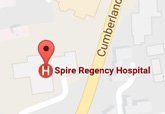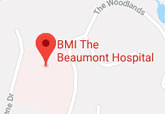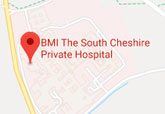The Spine
The spinal column, better known as your backbone, is a strong yet flexible multipurpose structure. It holds the weight of your head and torso and allows you to move in many directions. If it were nothing but a straight, inflexible rod, we'd walk like robots from bad B-movies. Instead, the flexible spine (moved and supported by muscles) enables us to twist and hit a golf ball and bend over to tie our shoes. The bony spinal column surrounds your spinal cord much like a conduit around an electrical cord. It protects the all-important spinal cord, a bundle of nerves that run from your brain through your spinal column and branch out to the rest of the body. Technically speaking, the spinal column includes 34 bones. Twenty-four bones are articulated vertebrae bones (a singular bone is a vertebra). At the bottom of the spinal column are the remaining bones, the naturally fused vertebrae of the sacrum and coccyx, which join with your pelvis (hip bones). When healthcare professionals refer to the spine, they're generally talking about the 24 vertebrae that form an elegant, double-S shaped line.

Articulation refers to the motion that occurs between joints. For example, certain facet joints in the spine allow for up, down, side to side, and twisting movements. Spine's Vertebral Bones Vertebral bones have different shapes and sizes and they get larger farther down the column. There are differences, but there are also plenty of similarities. Each vertebra has a large, cylinder-shaped body and a vertebral arch. The arch can be further subdivided into the spinous process (the bone that you can feel sticking out) and facet joints that wing out to the sides. Seen from above, a vertebra looks like a giant head with three pieces sticking out and a hole in the middle. Muscles, ligaments, and discs attach to various parts of a vertebra.
The space between the vertebral body and the arch is the spinal canal, for your spinal cord. If this canal narrows, due to disease, for example, it can squeeze the spinal cord and cause pain. Remember, your spinal cord is a bundle of nerves and nerves carry pain signals. There are other openings among the stacked vertebrae, too. Spaces called intervertebral foramina are where nerve roots branch out of the spinal cord.
Intervertebral foramina are the holes through which the nerves leave the spine. These holes are the spaces between the upper and lower vertebral bodies. The space is naturally rather narrow. If the space narrows more due to trauma, disease, or deterioration, nerves can get pinched. Curves Improve Spinal Column Strength Finally, let's take a look at the spinal column as a whole. When healthcare professionals refer to the different part of the spine, they reference them by the four main areas (cervical, thoracic, lumbar, and sacral). Each bone within an area has its own number. The spine is naturally curved. These curves make the spinal column stronger, help absorb shock from running and jumping, and help you maintain your balance. The size of the curves varies by individuals, but excessive curves can cause problems.




